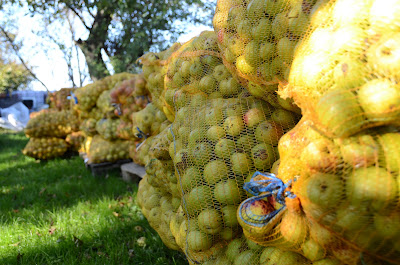Last week I met with Jeppe for coffee (cortado for Jeppe and a large americano for me) for a talk about his cider production at Fejø. Jeppe was very interested in my project on Danish cider – but laughed a bit about my approach. As Jeppe said “what you are doing is apple wine – not cider” and I guess apple wine is bad when comparison.
Here are some notes from the meeting.
Jeppe and his wife (the manager of the firm) was some of the first to produce cider here in Denmark. They used to have an apple orchard at Femø with Danish varieties but decided to plant a new orchard with cider apple trees on Fejø. Femø and Fejø are both small islands in the southern part of Denmark – very close to each other.
What they planted was mainly French cider and juice varieties as Douce Moen, Douce Coet Ligne, Avrolles, Kermerrien, Bedan, Bisquet, Friquin rouge, Judeline and Judaine.
Fejø cider is a natural cider. Organic grown apples. No additives. No sulfur. No yeast. No nothing – just pure cider apples grown in Danish soil.
Fejø cider is French cider in Denmark. A rich and balanced cider. Golden and very drinkable. Jeppe emphasized vintage 2011 as one of the best!
All work takes place at Fejø. The apples are harvested in the beginning of November, matured in big wooden boxes until milling and pressing. Jeppe don’t do maceration. The must is allowed to form brown hat and is then racked and fermented at low temperature in big plastic boxes and stainless steel tanks for up to three months. The cider is then filtered (not always), bottled and matured.
Jeppes cider sells on restaurants and bars around Denmark and at Systembolaget in Sweden – and I think Jeppe said Norway as well. Try it.
Sorry – but no pics yet. See and read more @
www.fejoecider.dk (in Danish).















